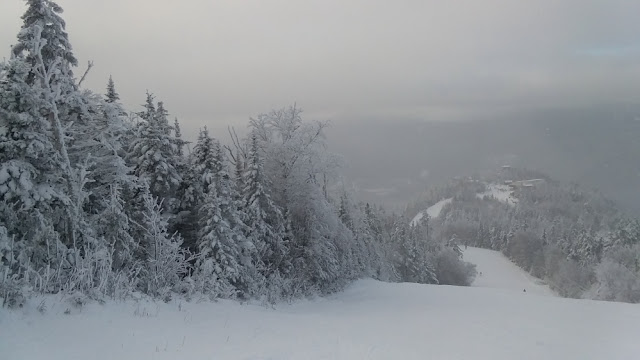 |
| Black ice as smooth as glass |
 |
| Another successful day of ice fishing |
 |
| Not much snow on those fields behind the lake |
Though even today it's still good enough for a full perimeter skate.
The bit of white stuff that did fall quickly changed over to sleet and then rain, creating another frozen, though beautiful mess.
Once again the snow conditions aren't very conducive to hiking or wildlife tracking, so there's not much to report on what's happening around the lake. I can report that the squirrels are hungry and very active, even in the pouring rain.
Confident that the bears are hibernating now, we put out all the bird feeders and the squirrels are attacking them with unusual tenacity even though they have their own feeder to enjoy.
But there are so many squirrels - and with the head honcho hogging the handout, the others have to go hunting elsewhere.
 |
| Please, feed me? |
Such a weak mast crop this summer following a prolific rodent season means tough sledding for the squirrels this winter. Watching them chase each other around through the trees, jumping from branch to branch, do you ever wonder if they sometimes fall? Although I've never seen it happen, the answer apparently is yes, and quite often. [Ref: Watch Out for Falling Squirrels, Brenda Charpentier, The Society for the Protection of New Hampshire Forests] This report says falls are not uncommon, but they are rarely fatal, as the squirrel's low mass, thick fur, and especially their large, fluffy tail slow their fall and cushion their landing. The above article reports a leap from a fourth story window onto a tiled patio without injury.
In addition to being good entertainment,
 |
| Entertainment on a rainy day |
Remember the many reports of squirrels swimming in water bodies all over New Hampshire this past summer? Maybe next we'll see them out skating on the ice.




















































